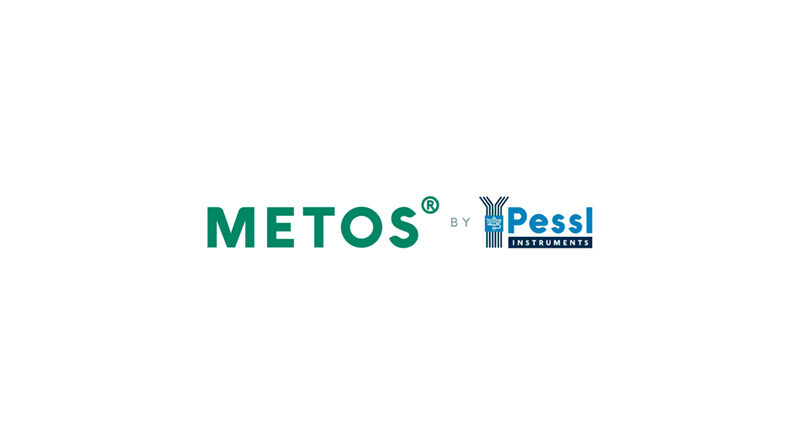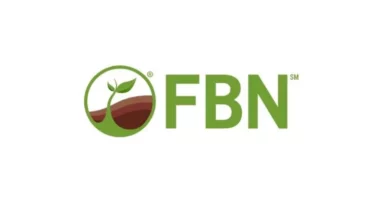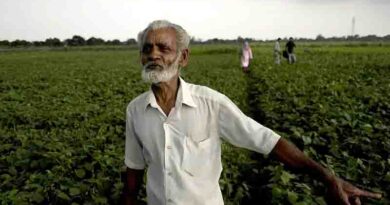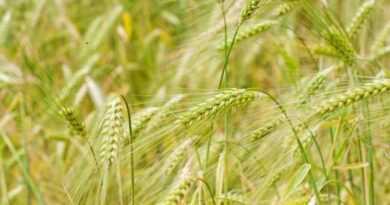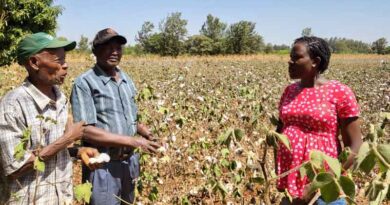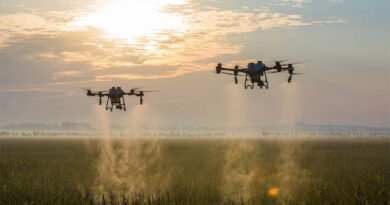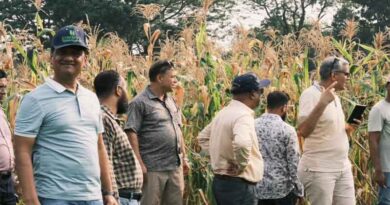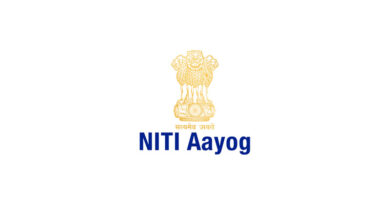Case study: Growing Wheat with No-Tillage and Conventional Tillage technology
17 December 2021, Austria: Tillage systems used in many on-farm applications for the productivity of growing wheat.
Full tillage systems used in many on-farm applications of intensive agriculture greatly impact the productivity of agricultural crops, especially under variable weather conditions experienced today.

The impact of climate change recently and going forward has and will force farmers to revise their A-to-Z crop cultivation technologies/methodologies, including tillage practices.
To move from one technology to another safely and without significant on-farm losses caused by huge investments in specialized tillage equipment, it is necessary to understand how soils and ultimately crop production, will react to new technologies/practices in combination with changing microclimate conditions, such as:
- the amount of annual precipitation and its seasonal distribution, the changes in temperatures and more specifically soil temperature, in a calendar year
- soil texture over its entire fertile profile, field capacity (FC) and soil compaction level.
Given that the equipment for “No-Till” and “Strip-Till” conservative technologies require much higher investment compared to the conventional methodology, the return on investment, in this case, is an important priority for the farmer, which is why all growing conditions that influence the harvest need to be considered.

Studies and analysis
Although, comparative studies of different tillage technologies in recent years have shed much light on the understanding and application techniques, however the global parameters, yield, economic efficiency, qualitative impact on the soil, etc. were analyzed, but not the causes underlying these qualitative changes, which, under different conditions, can negatively affect the productivity and efficiency of applied tillage technologies.
Soil moisture, in particular FC (see abbreviation at end of document) and WP, are the basic soil parameters needed to assess the soil’s ability to store and provide water to the crop.
This is determined by soil texture which is the starting point for the best choice of soil tillage method.

As described in Table 1, the texture of soil affects the capacity for water retention and conservation. Loose soils, regardless of their texture, have a higher FC than compacted soils, which means that these loose soils can hold a larger volume of water per unit of soil.
However, not always will soils with high water retention capacity guarantee a sufficient water reserve during the whole vegetation period, due to the rapid loss of volumes of water stored between the soil particles, by evapotranspiration and gravitational motion of water to the lower profiles of the soil.

Picture 1 illustrates that roots of some crops can penetrate to depths of over 2.5 m. However, the majority of soil-water is consumed by the main root system, which is in the layer from 1 to 1.5 meters deep. This is why the soil must be analyzed at least 0.6 m deep, to ensure the plant has the conditions to grow and consume nutrients and water.
The experiment
To examine the statements above, a field experiment was carried out for the period between Nov. 11.2020 to July 27.2021, for winter wheat cultivation. Sensors were installed for soil moisture and temperature down to 60 cm deep, along with evapotranspiration and precipitation. Two adjacent plots with different tillage technologies were also monitored.
The first plot was plowed in autumn (2020) at a depth of 28 cm and before sowing it was loosened to a depth of 60 cm.
The second plot was not tilled.
Soil texture in both plots: clay, with maize planted during the previous cultivation period.
The amount of precipitation (Graph 1) during the vegetation period of the Winter Wheat from the 2020/2021 season was 482 mm. The graph below shows the monthly distribution of precipitation.

The above mentioned environmental and soil parameters were continuously measured, with a frequency of 5 minutes. Soil temperature and moisture were measured at various depths, namely: 10, 20, 30, 40, 50 and 60 cm.
Based on these measurements, the changes in soil moisture and the movement of water in both plots were analyzed.
The main objective of the experiment was to determine information about:
- The ability of the soil to hold water in both plots studied (no-Tillage and Tillage).
- The amount of rain needed to reach the optimum level of FC in plots with different tillage technologies.
- The speed of water infiltration into the soil in both cases.
- The conditions and speed at which the soil loses water due to evapotranspiration.
Results
The results obtained in this experiment confirm the benefits of No-tillage technology over conventional tillage technology, illustrating that:
- Reduced diesel costs and working time by up to 50%.
- Increase in production by up to 10% in the first years (it has a cumulative effect on the long term production).
- Preservation of soil fertility.
- Increasing organic matter in the soil.
- Soil water conservation (more water held in the soil).
The benefits listed above are not the maximum that can be obtained by using this technology. It can bring more profit to the farmers and to the environment, by continuously monitoring the environmental and soil parameters which directly influence the productivity of agricultural crops.

The analysis of the soil moisture in the profile from 0 to 60 cm (Graph 2), in both plots throughout the vegetation period, shows the following:
- The volume of water retained by the soil in the tilled plot is higher throughout the growing season.
- The tilled soil reacts faster and retains more water from precipitation.
- No-tilled soil more efficiently absorbs water from melting snow (Fig. 2).

In the absence of precipitation, the no-tilled soil better retains water due to the lower level of gravitational motion.
- The temperature of the no-tilled soil during the warm periods of the year is lower, which leads to a lower level of evapotranspiration compared to the evapotranspiration in the tilled soil.
- During heavy rainfall, tilled soil absorbs a larger volume of water, but loses water faster than no-tilled soil, this is because of higher evaporation and deep percolation.
- The water content of the soil must always be analyzed qualitatively and quantitatively, at different depths, making sure that the soil moisture is within the optimal limits according to the FC and WP of the soil.
Analyzing the dynamics and water content in the soil 0 to 30 cm deep (Graph 3) we observe the following:
- The water retention and conservation capacity of tilled soil are higher than that of the no-tilled soil.
- In conditions of drought, the soils in the tilled plot have higher evapotranspiration losses under rainfed conditions.
- The 30 cm layer of the no-tilled plot loses water down to the Wilting point (stress) several times during the vegetation period.
- The soils in the no-tilled plots in drought conditions lose water more slowly.

The behavior of the soil water at the depth of 40 to 60 cm is completely different compared to the top layer in both plots analyzed (Graph 4).

The data in the chart (Graph 4) illustrates the following:
- No-tilled soil retains a larger volume of water compared to tilled soil at the same depth.
- The gravitational movement of the water decreased the water content in the tilled plot, to the wilting point several times during the observation period.
- During drought, the volume of water in the tilled soil is decreasing to the critical level (Extreme stress) which does not happen with untilled soil.
- Even in drought conditions, the soil in the no-tilled plot kept the water at the wilting point for several days longer than tilled soils.
The results of the experience and the findings above allow us to make important conclusions and proposals for adapting the “No-tillage” technology and methodologies.
Conclusion
Water content in the soil profile from 0 to 30 cm
The main finding is that the soil in the tilled plot can provide the plant with a larger volume of water throughout the growing season of the crop, but only with sufficient rainfall.
In drought conditions, both plots lose water due to the gravitational movement of water and evapotranspiration with the same speed, reaching the level of extreme stress for the crop.
In this case, we can say that the no-tilled soil is inferior, qualitatively and quantitatively, in different climatic conditions.
Thus, for clay-textured soils, we recommend the use of Mini-Till technology, which would involve only working the surface layer to increase the soil field capacity (FC) to provide crops with a sufficient volume of water during the period immediately after sowing and active vegetative growth.
Water content in the soil profile from 40 to 60 cm
The water content in this soil profile behaves completely differently from that of 0 to 30 cm.
Following Graph 4, we find that the volume of water retained in the layer from 40 to 60 cm in the no-tilled plot is much higher during the whole vegetation period, including during the drought.
This is where the superiority of no-tillage technology/methodology over conventional tillage technology/methodology is confirmed.
The explanation for this phenomenon is that the compacted soil better retains gravitational water and reduces its runoff in the lower layers.
Thus, the layer from 40 to 60 cm becomes an important source of water and plant nutrients for the entire vegetation period for winter wheat.
If we take into account the morphology of the roots (Picture 1), we see that the layer 40 to 60 cm deep is the host of the main root system, and has the basic role in providing water in the phases of active vegetative growth.
In this experiment, the no-tilled soil at the depth of 40 to 60 cm proved to be the soil with special water retention and conservation qualities.
This does not necessarily mean that the phenomenon will be the same in other fields with a different texture, or crops and in other regions.
To ensure that the soil has good water conservation qualities, it is necessary to monitor the moisture in the soil profile from 0 to 100 cm, at least during the agricultural season(pre-seeding to post-harvest). To fully understand soil moisture at various depths other important environmental variables also need to be examined such as precipitation, evapotranspiration, air temperature and soil temperatures.
Texture and soil profile
Because FC can be influenced by soil compaction we recommend regularly checking FC levels to avoid excessive compaction of the soil, so as to minimize decreases in soil water volumes.

By knowing the parameters mentioned above, it is possible to adapt the tillage technology for the efficient use of all the resources.
In the case of clay-textured soil, surface tillage is recommended to increase the field capacity of the surface layer and to have a soil layer that will allow the slow penetration of water into the layers below.
The lower layers of the soil must remain intact as long as the soil has good water retention qualities, meaning that they hold a sufficient volume of water within the optimal limits of field capacity related to its texture.
If the soil no longer has sufficient water retention and absorption capacity, which can be verified with soil moisture sensors, a deep loosening of the soil is recommended to restore its physical properties.
In conclusion, we can say that no-tillage technology/methodology is not a universal tool that can be applied everywhere to get the benefits attributed to this technology/methodology.
In order to constantly benefit from the application of this technology, it is necessary to continuously monitor a series of soil and environmental parameters, which are basic qualitative and quantitative indicators of the water cycle in this ecosystem.
Given all these findings, we see that when choosing the tillage technology/methodology, either no-tillage or minimal-tillage, all the above considerations must be taken into account and applied with the physical properties of the soil which may vary even within a farm. This may lead to zonation maps for no-tillage or minimal-tillage.
This would mean that only after studying the physical properties of the soil in detail and on the whole profile, we can identify which is the most suitable and economical soil tillage technology/methodology for the farm.

